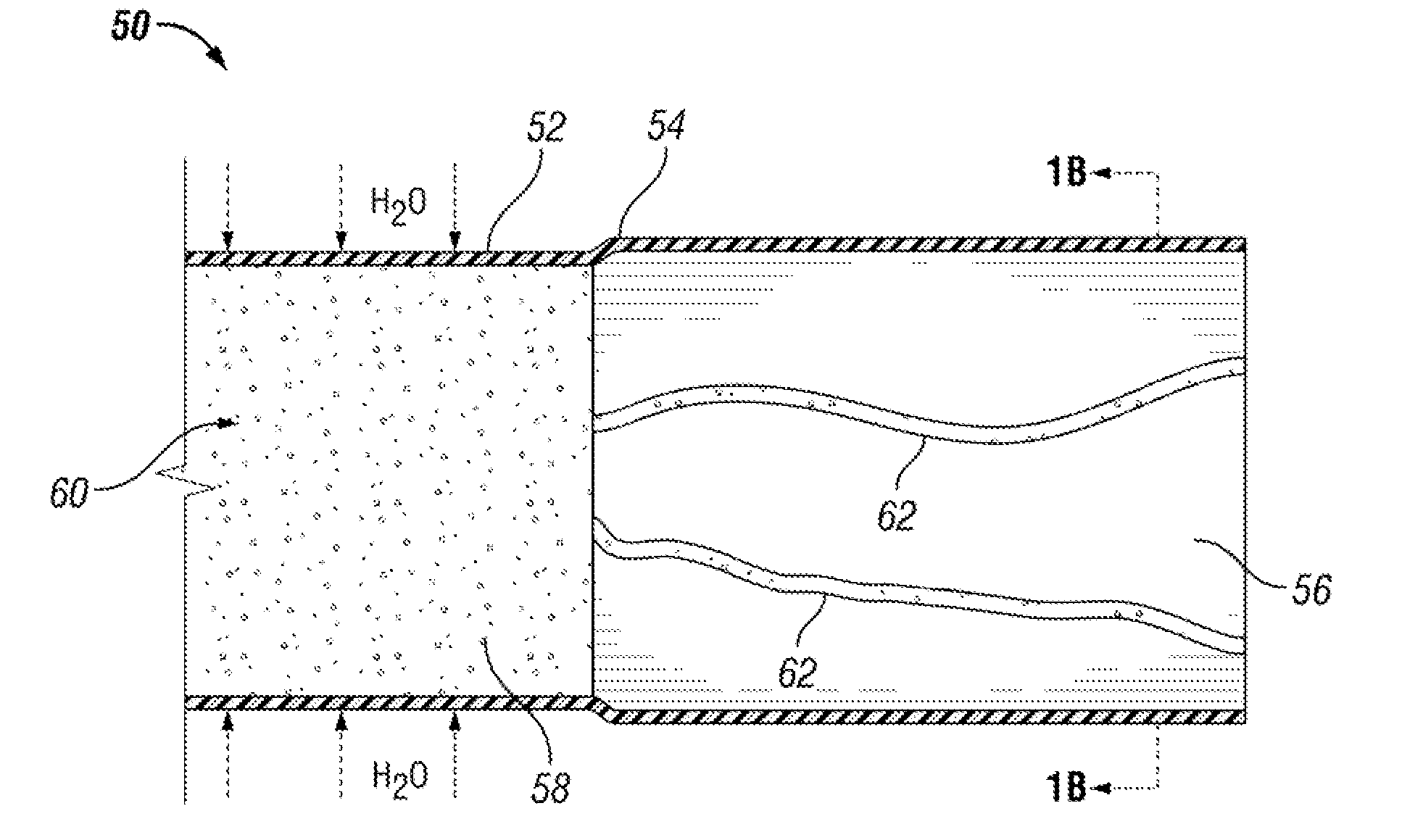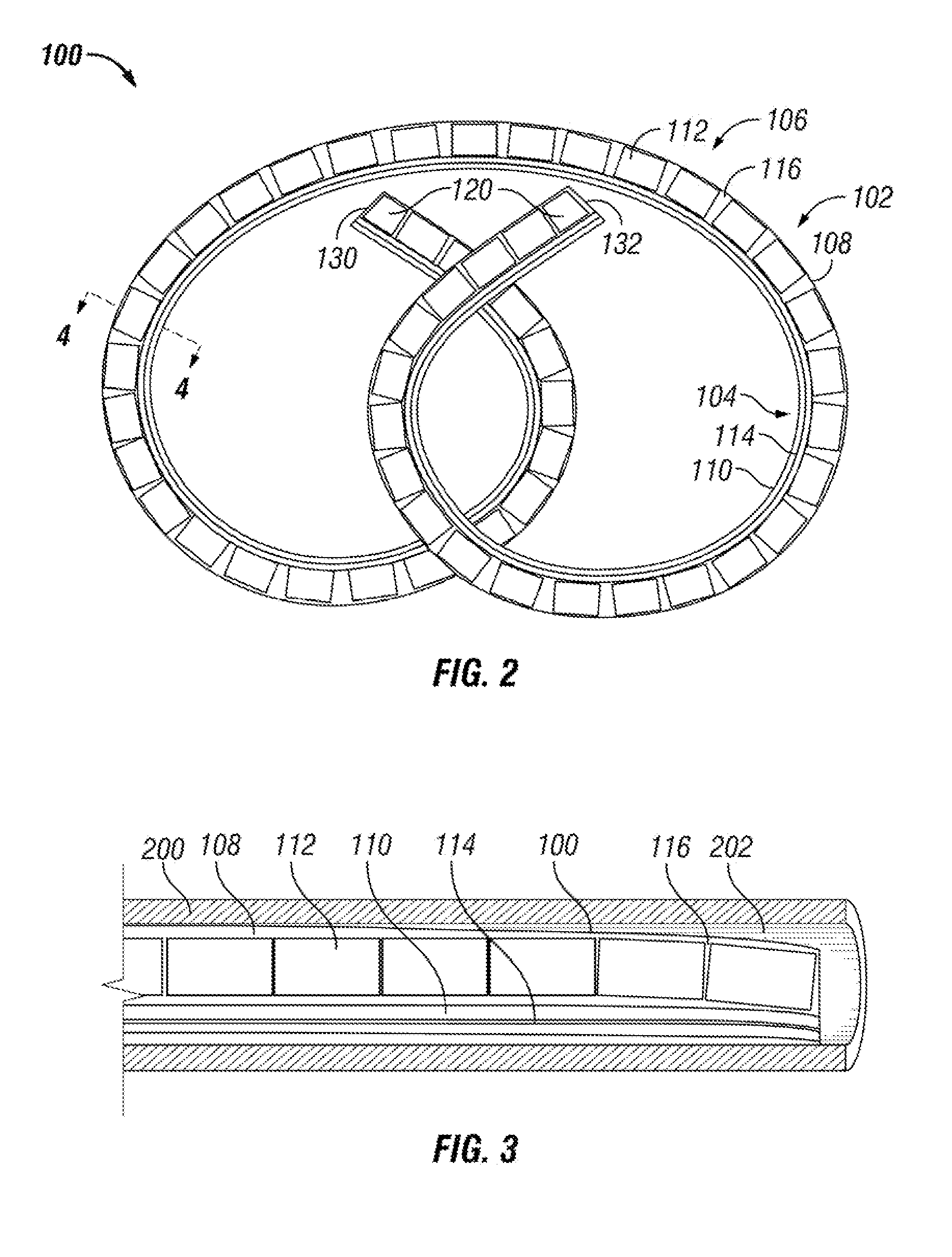Drug delivery devices and methods for drug delivery
a technology of drug delivery and drug delivery, which is applied in the direction of other medical devices, pharmaceutical active ingredients, medical preparations, etc., can solve the problems of orifice-containing devices that may potentially expel undesirable amounts of drugs, orifice-containing devices that may compress and release toxic amounts of drugs
- Summary
- Abstract
- Description
- Claims
- Application Information
AI Technical Summary
Benefits of technology
Problems solved by technology
Method used
Image
Examples
example 1
Comparison of Various System Configurations
[0120]Three drug delivery devices (FIGS. 10A-10C) with different system configurations were made and their in vitro drug release profiles were measured. Each of the three devices had an elastic body made of silicone with a drug reservoir lumen (901, 910, 920) and a retention frame lumen (903, 912, 922).
[0121]The retention frame lumen of each device housed a retention frame (904, 913, 923) made from nitinol wire. The nitinol wire kept the devices in the above-described “pretzel” retention shape when unstressed. The three drug devices in FIGS. 10A-10C are shown in a relatively straightened shape.
[0122]The drug reservoir lumen of each device had an internal diameter of 2.64 mm, and the drug reservoir lumens' walls were 0.2 mm thick. The drug housed in each drug delivery device in this example was lidocaine hydrochloride monohydrate (LHM) tablets (89.5% LHM, 2.5% PVP, 8% PEG 8000).
[0123]The first configuration, shown in FIG. 10A (Type A device)...
example 2
Water Displacement Test
[0127]The mass loss from a variety of devices filled with water after a single compression was measured. Before compressing the devices, each was filled with water instead of a drug formulation. To enable water filling and sealing, each device was fitted with access port tubing.
[0128]Each dry device was weighed before being filled with deionized water through the access ports using a dispensing tip. The ports were sealed with a smooth face clip once the devices were filled. The filled devices were then weighed while in an unstressed position. The unstressed devices were then placed on a flat surface, and compressed along the devices' long axis up to a pre-determined gap of 2 or 3 cm. In other words, the unstressed devices, which measured about 4 cm along their long axes, were compressed into a gap or space of 2 or 3 cm by a compressive force. The compressive force was applied along the devices' long axes. The devices were compressed for 15 seconds. For the dev...
example 3
In Vitro Release
[0135]The in vitro drug release performance of several configurations of drug delivery devices was tested. None of the drug delivery devices of this example included apertures.
[0136]The drug delivery devices of this example were made using a dual-lumen silicone tube. One of the lumens was a retention frame lumen containing a retention frame. The retention frame was a 0.254 mm diameter wireform. The other lumen of the dual-lumen silicone tube was a drug reservoir lumen having an inner diameter of 2.16 mm. The drug reservoir lumens of the devices hosted LHM tablets (89.5% lidocaine hydrochloride monohydrate, 2.5% PVP, 8% PEG 8000). The lidocaine FBE mass was about 470 mg. The devices of this example were not exposed to gamma irradiation.
[0137]The devices made and tested in this example are summarized in Table 2, which explain whether the ends of the devices included a restraining plug or a seal. In the tables, “CRP” is a cylindrical restraining plug, “OD” indicates out...
PUM
| Property | Measurement | Unit |
|---|---|---|
| Fraction | aaaaa | aaaaa |
| Fraction | aaaaa | aaaaa |
| Fraction | aaaaa | aaaaa |
Abstract
Description
Claims
Application Information
 Login to View More
Login to View More - R&D
- Intellectual Property
- Life Sciences
- Materials
- Tech Scout
- Unparalleled Data Quality
- Higher Quality Content
- 60% Fewer Hallucinations
Browse by: Latest US Patents, China's latest patents, Technical Efficacy Thesaurus, Application Domain, Technology Topic, Popular Technical Reports.
© 2025 PatSnap. All rights reserved.Legal|Privacy policy|Modern Slavery Act Transparency Statement|Sitemap|About US| Contact US: help@patsnap.com



